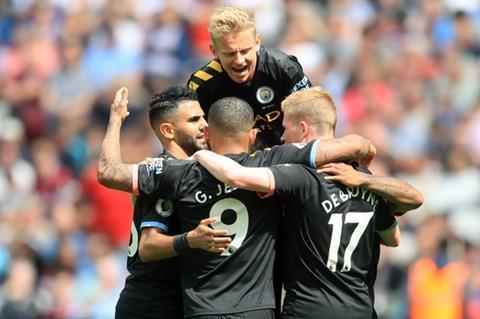Broadcasters have played a key role in driving up sports revenues, but could the entrance of OTT providers prevent the sports bubble from bursting? James Pearce investigates.

Increased revenue from broadcasters is driving money to the top football clubs, but the entrance of OTT players into football rights bidding could prevent a plateau.
In the 2018/19 season, the top 20 football clubs by revenue earned a combined €9.3 billion, up 11% on the previous season according to Deloitte’s Football Money League. Of that €939 million increase, €575 million came from increased broadcast revenues (up 16% year on year).
TV rights used to dominate football clubs’ income. The surging costs of showing games, led by the likes of the Premier League, also led to a surge in club revenues, resulting in a situation where the most expensive football transfer in 1996 was £15 million (Alan Shearer to Newcastle United) but by 2017, it was £198 million (Brazilian Neymar from Barcelona to Paris St Germain).
Now, the top-placed clubs are far less reliant on broadcast revenue than smaller clubs. The primary source of revenue for the top five clubs is commercial (49% of the total), compared to clubs placed 16 to 20 where 65% of their revenue comes from broadcast, according to the report.
What has driven those rights values even higher is competition. In the UK, the entry of BT Sport into football rights led to Sky spending even more to remain the home of the Premier League. This is the case across other markets, where football rights are seen as a premium product.
As with any market, the higher those costs go, the more that limits who can afford to bid. Sticking with the Premier League, during the last bidding cycle, spend fell short of the £5.14bn raised during the rights cycle before it. The Premier League had hoped interest from OTT providers such as Amazon or Netflix would drive up the bidding, but ultimately BT Sport and Sky remained the biggest bidders, spending a combined £4.5 billion for the next three years.
Notably, Amazon did enter the bidding, buying rights to show 20 Premier League games for an undisclosed fee. It showed two rounds of games in December, including all 10 games played on Boxing Day.
This was the first time Premier League games in the UK have not been aired on a traditional TV platform – Sky has held the rights since 1992, when the League was first formed, with BT Sport entering in 2013. ESPN and Setanta Sports also showed games.
Other leagues have been shown in the UK on OTT platforms, but with limited success. Eleven Sports won rights for La Liga and Serie A on three-year deals at the start of last season. However, by February it no longer had exclusive rights for either and no longer shows any games from either league.
According to the Deloitte study, we have “reached a pivotal point in the football industry” due to “uncertainty surrounding future growth in revenue from broadcasters”.
Could Amazon Prime Video’s entrance into the football broadcasting game pave the way for other OTT providers?

In a report last year, sports video was identified as the main driver of growth in global content revenues that were predicted to hit $250 billion. The report from Juniper Research estimated global consumer spend would increase by $23 billion in 2019 to $250 billion overall, but $94 billion of that would be made up of sports video content.
Amazon, Facebook and Twitter streaming services acquiring more sporting rights will bolster the content market share even further.
New entrants focussed entirely on sport, such as DAZN, could add even more to this. In 2018 it announced a five-year multi-million dollar broadcast agreement with American boxing promoter Golden Boy Promotions to screen up to 10 live and on-demand fights per year. The deal cost $365 million and aired the fights to fans in all its territories including Austria, Germany, Japan, Switzerland, Canada and the US.
- Read more: MESA tackles OTT sport opportunities
The Media & Entertainment Services Alliance (MESA), in its post IBC2019 report, looked at multi-territory OTT sports platforms, highlighting the boom in OTT services.
“There is going to be a lot of competition for customers, and there will be a need to reduce the churn. That is going to lead to greater personalisation, which will make the discovery process a lot quicker and more efficient,” said Testronic VP of strategy Chris Parry. “I also believe we will see a lot of different price points and monetisation models.”
Bubbling over
So, can the entry of OTT players into football rights prevent the bubble from bursting?
Speaking at the Leaders Week conference in London last year, BeIN Media Group CEO Yousef Al-Obaidly warned that issues such as piracy could lead to a situation where traditional media companies quit paying huge fees for football rights.
“We now live in a world where exclusive broadcast rights are, effectively, wholly non-exclusive”, he told attendees.
“Consumers, young and old, are accessing everything for nothing, via Kodi or a VPN or beoutQ, wherever they are and whenever they like, and this behaviour is being normalised. If you don’t protect your intellectual property, you have nothing. These are commercial revenues that are being shoplifted every day and shoplifting is seen as acceptable behaviour by consumers.”
With broadcasters under more financial pressures than ever before and expensive sports packages viewed as being poor value for money (24% cited this as a reason for illegal streaming in a 2017 BBC poll), the challenges are clear.
























No comments yet